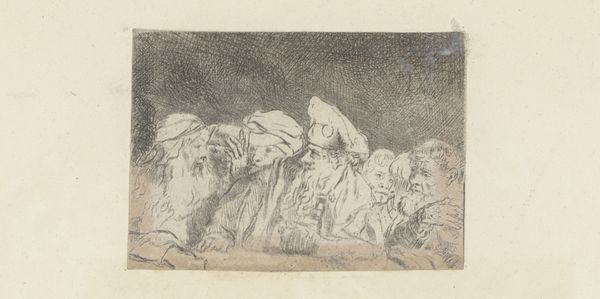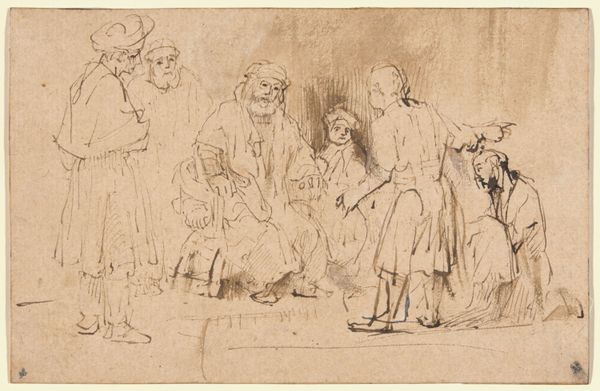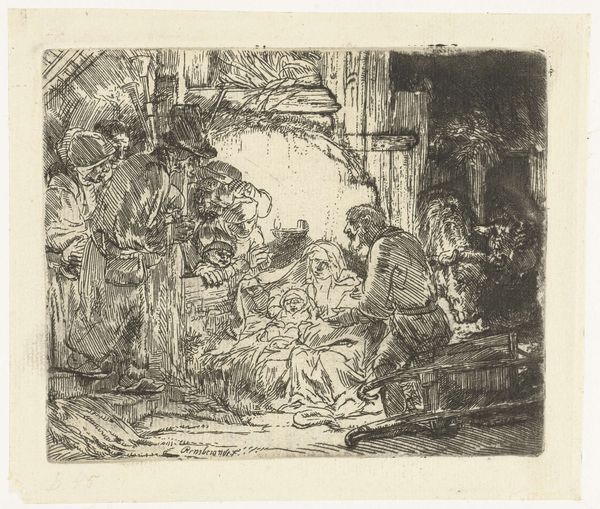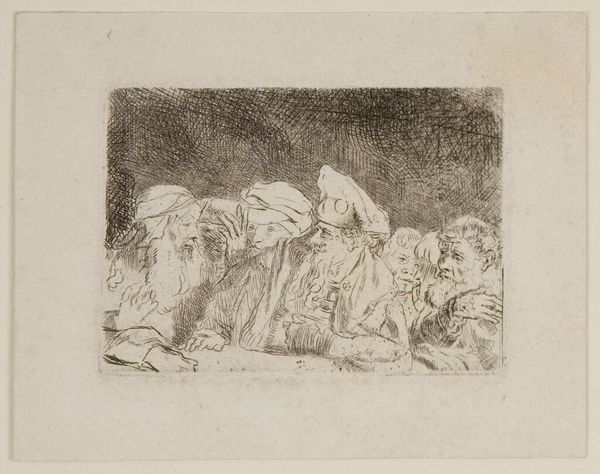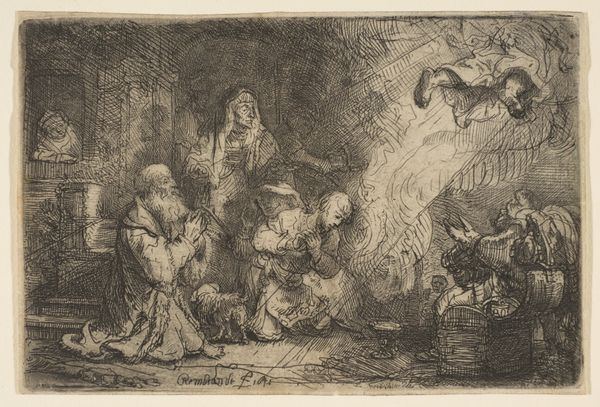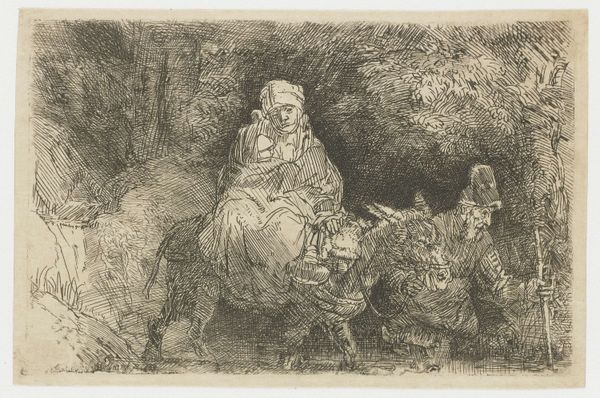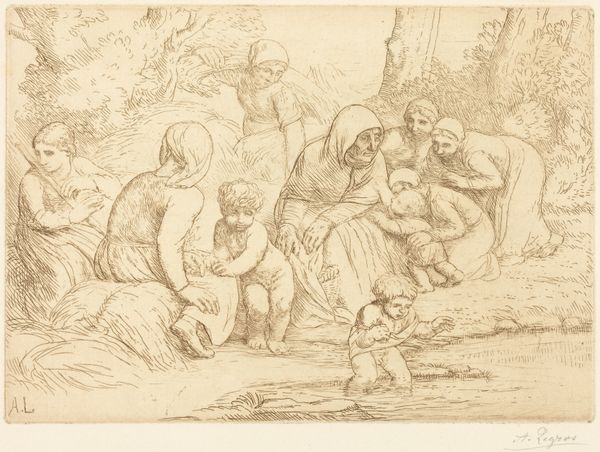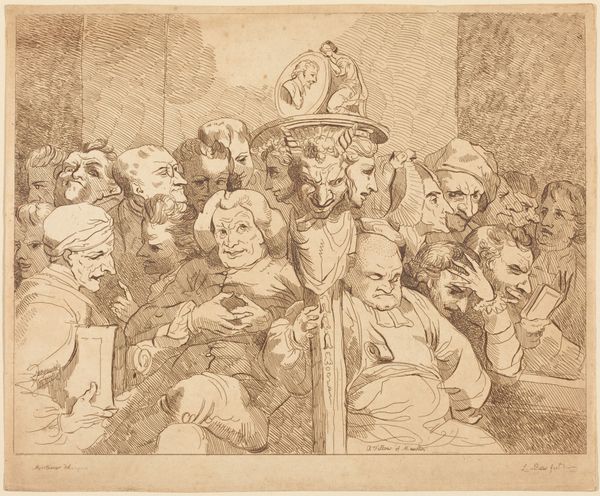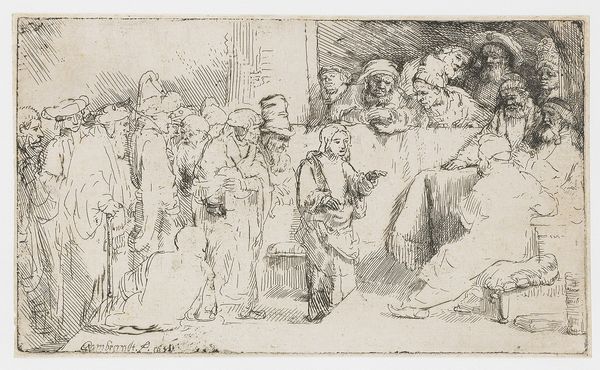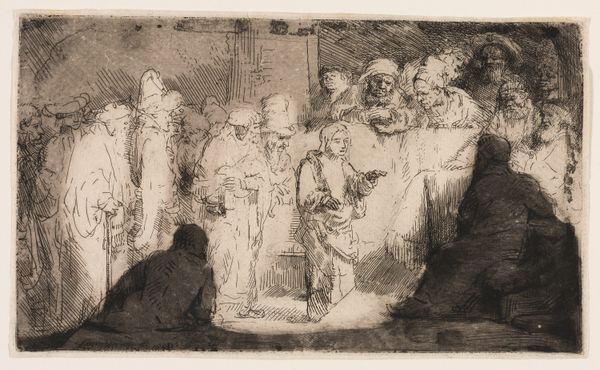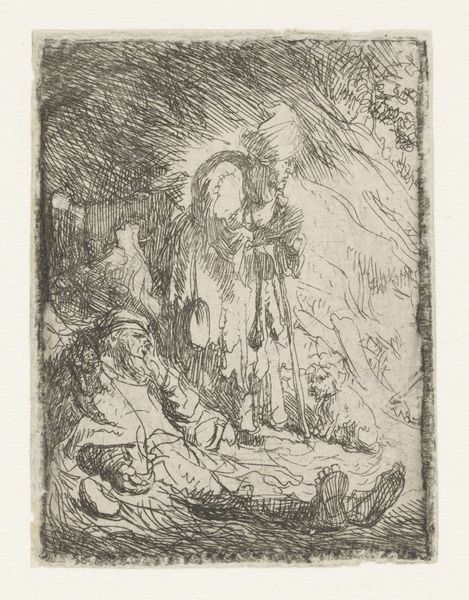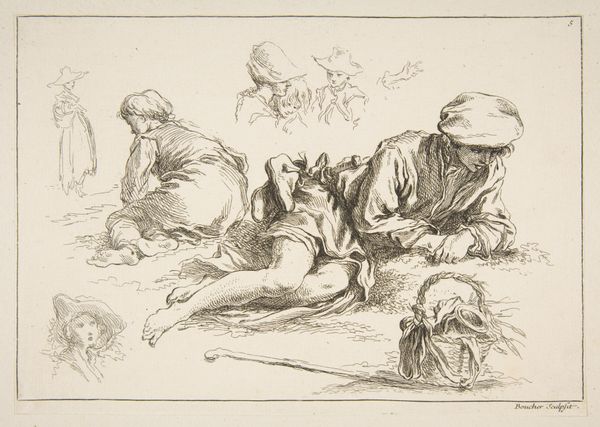
The Hundred Guilder Print: the figures leaning on the wall in the centre left c. 1648 - 1800
0:00
0:00
rembrandtvanrijn
Rijksmuseum
print, etching
#
portrait
#
narrative-art
#
baroque
#
dutch-golden-age
# print
#
etching
#
figuration
#
chiaroscuro
Dimensions: height 54 mm, width 74 mm
Copyright: Rijks Museum: Open Domain
Editor: Here we have Rembrandt van Rijn’s etching, "The Hundred Guilder Print: the figures leaning on the wall in the centre left," dating from around 1648 to 1650. It's currently housed at the Rijksmuseum. I find the density of the lines and the darkness quite striking. What strikes you most about this piece? Curator: Considering the materials, etching allowed for the mass production of images, impacting consumption and dissemination of visual ideas within Dutch society. The "Hundred Guilder Print" got its name due to its expensive cost. This is a commentary on Rembrandt's perception of worth being tied directly into commerce. But what sort of labor would it have required? What can this tell us about Rembrandt's studio and assistants at that moment in time? Editor: That's a good question, I hadn’t thought about that aspect of printmaking. So the process of creating multiple prints involved many skilled hands? Curator: Exactly! Consider the paper itself. Where did it come from? What were the processes to produce it? Paper making was a valuable skill and trade during that period, so to ignore these aspects of production ignores Rembrandt's influences. Editor: I see, the labor involved in creating this etching went far beyond just Rembrandt himself. It highlights how art production is tied to broader economic and social systems. Was Rembrandt also making a statement about art and value? Curator: I think it is inevitable in understanding this artwork's process. Rembrandt made clear, and perhaps to his own detriment, his understanding of the artistic machine in his own period. What do you make of the interplay between light and shadow - or rather the physical act of carving these lines into the copper plate? Editor: Looking at the figures again, their expressions seem so individual. Almost as if Rembrandt aimed to dignify his subjects even if he did not share their social standing. Thinking about the materials definitely enriches the experience of the artwork. Curator: Indeed! By considering labor, the price of materials, and how they are transformed, we reveal not only art’s social contexts but question traditional value systems applied even today.
Comments
No comments
Be the first to comment and join the conversation on the ultimate creative platform.
